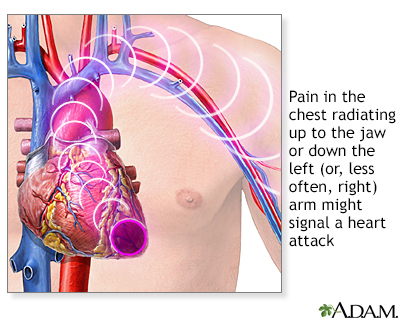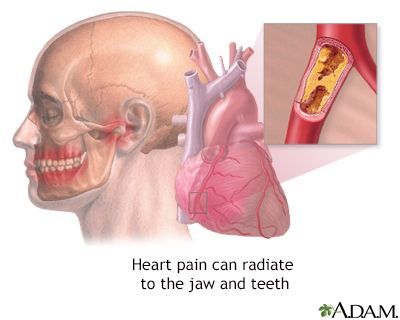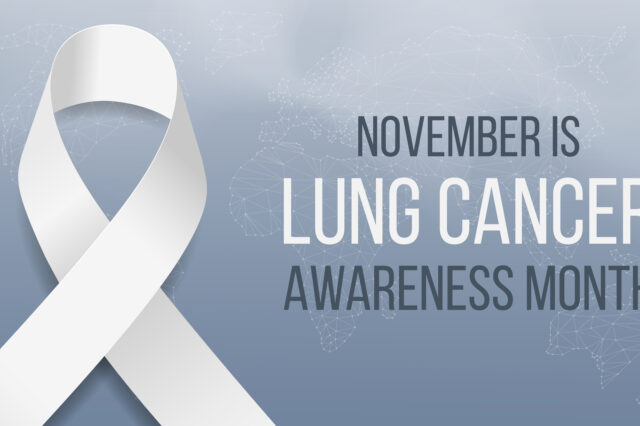Bystander CPR Helps Michael Overcome Sudden Cardiac Arrest
Sitting in church and practicing songs for Sunday service, Valerie Layton unexpectedly felt the weight of her husband Michael lean on her. It was April 1, so…

Update your location to show providers, locations, and services closest to you.
Chest pain is discomfort or pain that you feel anywhere along the front of your body between your neck and upper abdomen.
Chest tightness; Chest pressure; Chest discomfort
Many people with chest pain fear a heart attack. However, there are many possible causes of chest pain. Some causes are not dangerous to your health, while other causes are serious and, in some cases, life threatening.
Any organ or tissue in your chest can be the source of pain, including your heart, lungs, esophagus, muscles, ribs, tendons, or nerves. Pain may also spread to the chest from the neck, abdomen, and back.
Heart or blood vessel problems that can cause chest pain:
Lung problems that can cause chest pain:
Other causes of chest pain:
Chest pain can also be due to the following digestive system problems:
In children, most chest pain is not caused by the heart.
For most causes of chest pain, it is best to check with your health care provider before treating yourself at home.
Call 911 or the local emergency number if:

Your risk of having a heart attack is greater if:
Call your provider if:
Your provider may ask questions such as:
The types of tests that are done depend on the cause of the pain, and what other medical problems or risk factors you have.


Amsterdam EA, Wenger NK, Brindis RG, et al. 2014 AHA/ACC guideline for the management of patients with non-ST-elevation acute coronary syndromes: a report of the American College of Cardiology/American Heart Association Task Force on Practice Guidelines. J Am Coll Cardiol. 2014;64(24):e139-e228. PMID: 25260718 pubmed.ncbi.nlm.nih.gov/25260718/.
Bonaca MP, Sabatine MS. Approach to the patient with chest pain. In: Libby P, Bonow RO, Mann DL, Tomaselli GF, Bhatt DL, Solomon SD, eds. Braunwald's Heart Disease: A Textbook of Cardiovascular Medicine. 12th ed. Philadelphia, PA: Elsevier; 2022:chap 35.
Brown JE. Chest pain. In: Walls RM, Hockberger RS, Gausche-Hill M, eds. Rosen's Emergency Medicine: Concepts and Clinical Practice. 10th ed. Philadelphia, PA: Elsevier; 2023:chap 22.
Goldman L. Approach to the patient with possible cardiovascular disease. In: Goldman L, Schafer AI, eds. Goldman-Cecil Medicine. 26th ed. Philadelphia, PA: Elsevier; 2020:chap 45.
Gulati M, Levy PD, Mukherjee D, et al. 2021 AHA/ACC/ASE/CHEST/SAEM/SCCT/SCMR guideline for the evaluation and diagnosis of chest pain: a report of the American College of Cardiology/American Heart Association Joint Committee on Clinical Practice Guidelines. J Am Coll Cardiol. 2021;78(22):e187-e285. PMID: 34756653 pubmed.ncbi.nlm.nih.gov/34756653/.
O'Gara PT, Kushner FG, Ascheim DD, et al. 2013 ACCF/AHA guideline for the management of ST-elevation myocardial infarction: a report of the American College of Cardiology Foundation/American Heart Association Task Force on Practice Guidelines. J Am Coll Cardiol. 2013;61(4):e78-e140. PMID: 23256914 pubmed.ncbi.nlm.nih.gov/23256914/.
Sitting in church and practicing songs for Sunday service, Valerie Layton unexpectedly felt the weight of her husband Michael lean on her. It was April 1, so…

Lung cancer has a way of staying hidden and becoming increasingly fatal the longer it does so. There are enormous benefits to shining light on this particular…
